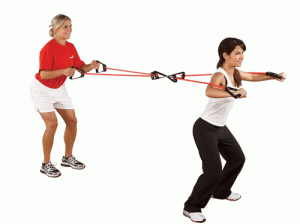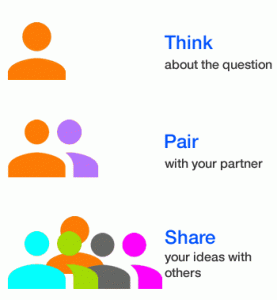No matter how healthy you are, it is likely that there is room for improvement in some area of your life. Perhaps you eat very healthy, but you struggle to find the time to exercise. Maybe you have a great grasp on how to deal with your feelings, but you lack positive relationships in your life and have a hard time with your social health. Whatever piece of your health you need to improve, our Health Partners groups continue to prove that success is more likely with the support of a partner.
Research shows that lifestyle changes happen more readily and last longer if individuals have a support person to encourage them in their changes. (Reed, 2013) The Health Partners project utilizes the healthy lifestyles curriculum that focuses on holistic health programming for individuals with disabilities. In order to make it accessible for everyone and to include partners, we were able to adapt it for a partnered dyad approach. This means that one individual with a disability and one individual without a disability go through the program together.

This approach works for several reasons, and many activities can be easily adapted. Most importantly, the dyad approach is evidence based. Macdonald (2010) reports that a successful health promotion programming approach must recognize the important influence of supports, whether natural or paid, for achieving and sustaining healthy behavior changes. Not only does having a support person build in accountability, but it also means that each individual has someone to motivate and encourage them on their journey to becoming healthy.
There are various ways to include a partner in health and wellness programming. Some of the specific strategies we used as recommended by our expert panel when adapting the curriculum are listed below. Note that some of the links refer to students of classroom age, but the concepts can apply to adapting curriculum for any age. So get the creative juices flowing, grab a partner, and get moving towards a healthier you!
- Think, pair, share method – This allows participants to think about a concept, discuss it with their partner, and then share their ideas with each other and the larger group. To encourage active listening, you can ask partners to share their partner’s ideas rather than their own.
- Scenario based learning – There is no better way to ensure that participants are grasping an idea than to have them practice using a real-life scenario. Acting out scenarios with a partner will make skills more transferable for practical use.
- Partner physical activity – It’s easy to see why being physically active can be great with a partner. Resistance bands are just one way to make exercising in pairs fun.
- Brainstorming and goal setting support – By working together to create SMART (specific,measurable, attainable, realistic, time based) goals, both partners will have a good idea of what kind of support the other needs and can assist each other along the way.


References:
Macdonald, C. M. (2011). Sustainability of health promotion
for people with learning disabilities. Nursing Standard, 25(22), 42-47.
Reed, R. G., Butler, E. A., &Kenny, D. A. (2013). Dyadic
models for the study of health. Social & Personality Psychology Compass, 7(4). 228-245.
This project is funded by the Commonwealth Council on Developmental Disabilities.


